Military
The Second London General Hospital was located at St Mark's College in Chelsea and the adjoining LCC secondary school. The chief difficulty of establishing a hospital there was that the sanitary arrangements were quite unsuitable. Additional sanitary annexes had to be built and a number of temporary structural alterations made.
The medical section of the Hospital was located in the College building. A large sterilizer and complete appliances for disinfection were installed. The wards, which varied greatly in size, were on two floors and held accommodation for 260 patients. The kitchens were established in the basement, and had been fitted up by the gas company within 48 hours. The nurses' sleeping quarters and a dining room and sitting room were on the third floor. Male personnel were housed in a detached building.
The surgical section, also with 260 beds, was in the school building. A direct connection between the College and the school was made by demolishing a section of the wall between them. Some of the smaller rooms in the school, which could contain 4 or 5 beds, were reserved for especially serious cases or for officers. An operating theatre, with sterilizer and all necessary fittings, was installed and, by mid September 1914, the Hospital was ready to receive patients.
In addition to the Hospital's resident staff of the Commanding Officer, a Registrar, a Quartermaster and six newly gazetted lieutenants of the Royal Army Medical Corps, the consultants were members of the visiting staff of St Thomas's, Guy's and the London Hospitals.
The wall at the west side of the grounds was partially demolished to allow access to the platform at Chelsea station, so that patients could be brought from the ambulance trains direct to the Hospital by the shortest and most private route.
The first patients admitted were those troops who had overstrained or injured themselves during training in England, but by the end of September 1914 some 78 men had been received from the front and, on 1st October, 141 more. The patients arrived in a deplorable condition - haggard, dirty with matted hair, unshaven, and their clothes stiff with mud and blood from wounds. Most had wounds of the upper extremities, nearly all due to shrapnel rather than rifle bullets, but a few with compound fractures of the femur. Most of the wounds were septic by the time they reached the Hospital. Indeed, men who had been at the front or who had been mobilized as Territorials tended to become verminous, and a regular routine was followed at the Hospital to prevent the beds becoming infested by lice. Some soldiers were suffering from rheumatism and sciatica, attributed by them to being constantly in wet trenches. By mid October the Hospital had 400 patients, 219 of which had been received from the front and the rest members of the Territorial Force referred from other parts of the country for surgery for inguinal hernia or varicose veins.
A section of the Hospital, some 200 beds, had been established at St Thomas' Hospital, with another 40 beds at the Great Northern Hospital in Holloway. That these Hospitals were so far away from Chelsea made the administration difficult, but the kindness of a lady, who had placed her motor car at the disposal of the medical staff, made the situation easier.
In October 1914 the King and Queen visited the Hospital and, in November, Princess Henry of Battenburg. In February 1915 Queen Alexandra also visited, accompanied by her daughter, Princess Victoria.
By the beginning of 1915 the Hospital had received 22 patients who had been blinded, including two officers and one NCO. The War Office decided in future to send all patients with badly damaged eyes to this Hospital or, if it was full, to the Third London General Hospital. The patients came under the care of St Dunstan's Hostel for Blinded Soldiers and Sailors, whose staff visited daily to help the newly blind to cope with the depression that inevitably accompanied the first moments of a lifetime of blindness.
In May 1915 all Territorial General Hospitals were required to establish Neurological Sections, for the treatment of patients with shell shock or neurasthenia.
By 1917 the Hospital had 170 beds for officers and 974 for enlisted men, including 198 for ophthalmic cases.
The Hospital closed in 1919.
Present status (May 2010)
After the war students returned to St Mark's College for trainee teachers. In 1923 it amalgamated with St John's College in Battersea to form the College of St Mark and St John.
In 1973 the College moved to Plymouth and the LCC compulsorily purchased the 7-acre site (thought at the time to be needed for the West Cross route). After much controversy, the building was sold to Chelsea College in 1980. Shortly after this, Chelsea College was taken over by King's College London, who provoked further controversy in 1989 by proposing to sell the site. It was eventually sold in 1999, after planning consent had been obtained to convert the principal's residence, Stanley House, to offices and the Octagon (once a school which became a library in 1953 and then a school again in 1995) for commercial use.
Stanley House and the Octagon were Grade II-listed in 1969. The entire site was refurbished and redeveloped for housing in 2000.
The Grade II-listed School building, built in 1908 (the LCC's first purpose-built school for girls ) became the Sloane Secondary School for Boys in 1919, while the girls' school moved into premises next door as the Carlyle School for Girls.
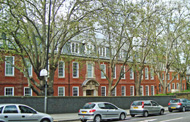
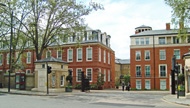
The College buildings, as seen from the west along Kings Road (left) have been refurbished. The gateway was rebuilt and the site is now called Kings Chelsea.
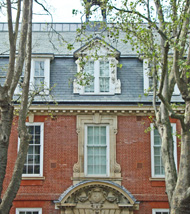
The ornate stonework above the main entrance.
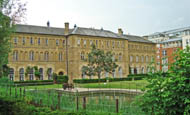
Surviving buildings of St Mark's College, as seen from across the parkland.
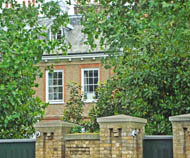
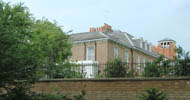
Stanley House, as glimpsed from King's Road (left) and from the parkland (right).
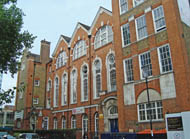

The Sloane School in Hortensia Road (left) and the back of the building, seen from the parkland.
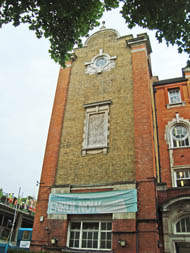
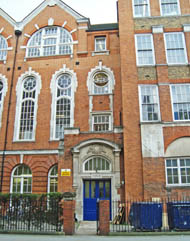
The Sloane School building bears the date '1908'.
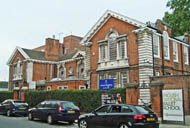
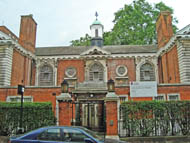
The Carlyle School in Hortensia Road, built in 1914.
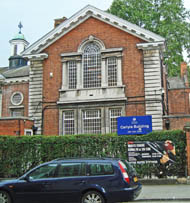

Signage for the Carlyle School above the doorway with the LCC logo.
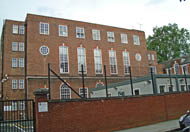

The 1937 extension to the Carlyle School, adjacent to the original building in Hortensia Road.

St Mark's College Chapel, Fulham Road.
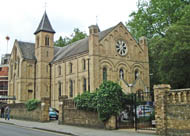

The Chapel (left) and its entrance (right).

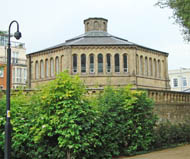
The Octagon as seen from Fulham Road (left) and from the small park (right).
(Author unstated) 1914 2nd City of London General Hospital. British Medical Journal 2 (2801), S163.
(Author unstated) 1914 The Hospital World. 2nd London General Hospital TFNS. British Journal of Nursing, 19th September, 230.
(Author unstated) 1914 The reception of the wounded. The London Territorial Hospitals. British Medical Journal 2 (2803), 518.
(Author unstated) 1914 Care of the wounded. British Journal of Nursing 53, 404.
(Author unstated) The Hospitals and the war. 2nd London Territorial Hospital. British Medical Journal 2 (2806), 644.
(Author unstated) 1915 Nursing and the war. British Journal of Nursing, 6th February, 109.
(Author unstated) 1915 Care of the wounded. British Journal of Nursing, 13th February, 131.
(Author unstated) 1917 List of the various hospitals treating military cases in the United Kingdom. London, H.M.S.O.
(Author unstated) 1918 A souvenir of the Second London General Hospital, Chelsea, S.W. British Journal of Nursing, 9th February, 93-94.
www.1914-1918.net
www.archives.kingsimages.net
Return to home page